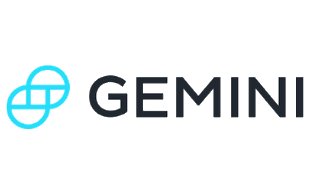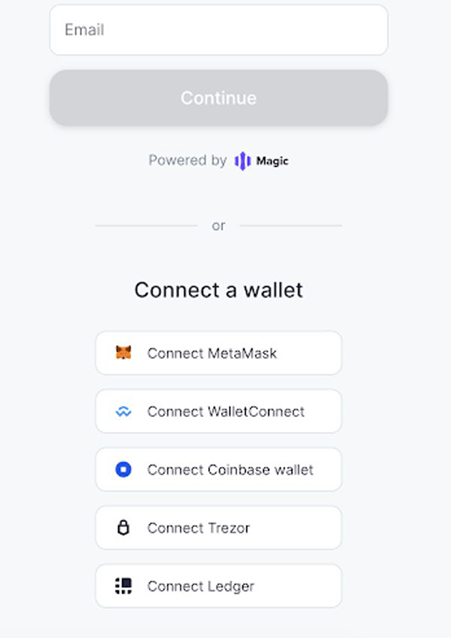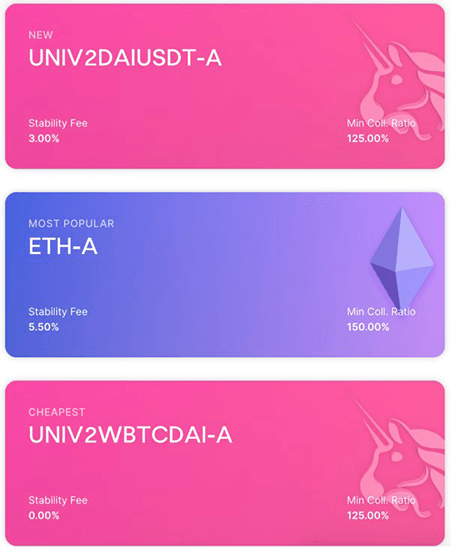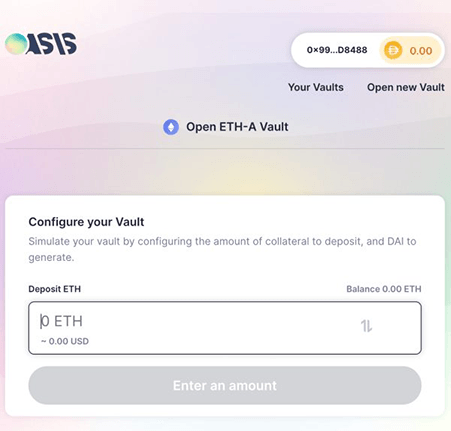-
Commitment to our readers
18 years
Helping you save money
Reviewed
by experts
Cited by
major publications
Finder maintains full editorial independence to ensure for our readers a fair assessment of the products, brands, and services we write about. That independence helps us maintain our reader's trust, which is what keeps you coming back to our site. We uphold a rigorous editorial process that ensures what we write and publish is fair, accurate, and trustworthy — and not influenced by how we make money.
We're committed to empowering our readers to make sound and often unfamiliar financial decisions.
We break down and digest information information about a topic, product, brand or service to help our readers find what they're looking for — whether that's saving money, getting better rewards or simply learning something new — and cover any questions you might not have even thought of yet. We do this by leading with empathy, leaning on plain and conversational language that speaks directly, without speaking down.
Gemini Cryptocurrency Exchange

- Buy, sell and trade 80 cryptos.
- Platform designed for traders of all experience levels
- Get $25 in Bitcoin when you trade $100 with code Finder25
What is MakerDAO?
MakerDAO is a decentralized autonomous organization (DAO) built on the Ethereum blockchain. The organization is part of the decentralised finance (DeFi) ecosystem and aims to decentralize lending and borrowing services.
The MakerDAO protocol is associated with two native tokens: Maker (MKR), a governance and stability token, and Dai (DAI), a stablecoin pegged to the value of the US dollar. While MKR is important for the development of the protocol, DAI is the token leveraged for the majority of services offered on the platform.
MakerDAO offers token holders the ability to collateralize a range of digital asset holdings in return for stablecoin loans. These loans are paid in DAI and are managed through a system called "Collateralized Debt Positions" (CDPs).
Must read
MakerDAO and other DeFi protocols are experimental works in progress. Funds deposited into MakerDAO or DeFi protocols in general can be at risk of smart contract vulnerabilities, malicious developers and hacks.
What are MakerDAO CDPs?
CDPs are loan agreements, or smart contracts, between users and the MakerDAO protocol. Using smart contract technology, CDPs automatically mint new DAI tokens once digital assets have been deposited as collateral. CDPs then automatically return digital assets as soon as the DAI loan is repaid. Digital assets locked within a CDP are held in Maker's vaults.
Anyone can create a CDP and receive DAI. Loaned DAI can then be used for trading, hedging or purchasing other tokens. Once the DAI loan has been repaid, DAI tokens are burnt and collateral is released.
If a CDP cannot be repaid, the position gets liquidated. The collateral is sold automatically by the system to repay the debt. The collateral must also then cover any penalties and fees.
The amount of DAI tokens minted for a loan directly correlates to the value of digital assets deposited as collateral. The amount of collateral required depends on how much DAI a user needs.
How does MakerDAO work?
MakerDAO allows any user to deposit digital assets in return for the platform's stablecoin DAI. However, unlike other stablecoins, DAI does not draw its value from USD cash reserves. Instead, the platform implements various systems to maintain DAI's peg. These include adjusting stability fees, over-collateralisation, automatic liquidations and MKR dilution.
Stability fees are charged for the generation of DAI tokens from Maker's vaults. These fees are paid in MKR tokens and are adjusted by MKR-token holders that govern the platform. By increasing or decreasing stability fees, the protocol can alter the attractiveness of CDPs. For example, if DAI is slightly higher than $1, stability fees can be increased to reduce CDP creation. If fewer CDPs are created, it reduces DAI supply and therefore reduces DAI's value.
To create a buffer to DAI stability, all borrowers are required to over-collateralise each loan by 150%. A CDP's collateralization ratio must remain above 150% throughout the duration of the loan. For example, if an ETH token holder wanted to borrow $100 worth of DAI, they would need to deposit $150 worth of ETH. The collateral would remain locked in the CDP until the $100 of DAI is paid back in full, along with stability fees. If the price of ETH happened to drop by 50%, a user would need to deposit another $75 worth of ETH (50% of $150) to avoid automatic liquidation.
Although a 150% collateralization ratio is required, 200% is often recommended. This is because MakerDAO implements automatic liquidations. The collateralization ratio will move depending on the value of collateralised digital assets. If the collateralization ratio falls and remains below 150%, the MakerDAO platform will automatically begin selling collateral to cover the gap. This incentivises all users to maintain their collateral deposits.
If the above steps are not enough to prevent a high number of liquidations, the final step that MakerDAO can implement is a dilution of MKR tokens. In the event of a high number of liquidations, MKR tokens can be minted and sold directly to the market. The reserves can then be used to cover the gaps left by collateral liquidation. By minting and selling MKR tokens to the market, it depreciates the value of MKR, and, therefore, depreciates the portfolio of MKR token holders. MKR token holders govern the platform and are incentivised to keep the platform running smoothly and avoid the dilution of MKR assets.
What is DAI?
DAI is a decentralized stablecoin that is soft-pegged to the US dollar. It was developed using the ERC-20 token standard and is native to the Ethereum blockchain.
DAI was designed to mirror the value of USD and provide a token with lower volatility than traditional cryptocurrencies. Thanks to DAI's price stability, the token can be a reliable medium of exchange.
DAI can be acquired by depositing collateral on the Maker platform or through an exchange just like any other cryptocurrency.
How is DAI different from USDT and other stablecoins?
There are multiple stablecoins available in the cryptocurrency markets. A highly liquid comparable stablecoin to DAI is Tether (USDT). USDT also mirrors the value of the US dollar but achieves its US dollar peg via cash reserves.
While DAI is powered by smart contracts and a decentralized on-chain governance system, USDT is backed by reserves held in a bank. For every USDT minted, one USD is held either as cash, treasury bills, fiduciary deposits or other cash equivalents.
What can I use MakerDAO for?
Let's explore some of the advantages of using the MakerDAO platform.
Expanding crypto positions through loans
Users can increase their cryptocurrency holdings by taking out loans from MakerDAO. For example, if a user wants to increase their Basic Attention Token (BAT) holdings but does not have any more fiat money to purchase some, they can leverage their existing portfolio. With MakerDAO, the investor could open a CDP and deposit the existing BAT holdings as collateral. The minted DAI could then be used to purchase more BAT. This process is referred to as decentralized leveraging.
Note. The loan would need to be repaid in full before the collateralised BAT could be withdrawn.
Participating in DeFi through loans
Instead of using borrowed DAI tokens to buy more cryptocurrency assets, tokens can be deposited into other decentralized finance applications to earn potential returns. This process is often referred to as yield farming. Several DeFi dapps rely on user-provided liquidity. In return for depositing tokens, most DeFi platforms reward liquidity providers with an annual percentage yield (APY).
Interest-earning savings
The MakerDAO platform hosts a feature called the DAI Savings Rate (DSR). The DSR allows DAI token holders to deposit and lock up DAI tokens in return for regular interest payments. This is a flexible savings account where users can withdraw DAI tokens, and accrued interest, at any time. The feature is accessible through the Oasis Save portal.
Borderless remittances
DAI can be used as a medium of exchange thanks to its relative stability. It is one of few cryptocurrencies that allows users to complete transactions without being plagued by price volatility. The token can also be utilised for cross-border money transfers, which makes it viable as a global remittance currency.
How to mint DAI
While DAI can be purchased directly from an exchange, the only way to mint DAI is through the MakerDAO platform.
Here are the steps to minting DAI:
- Web 3.0 digital wallet. To interact with the MakerDAO platform, you will need access to a Web 3.0 digital wallet. This will act as a bridge between your digital assets and the Maker application. We recommend using MetaMask since it is the most widely used web3 wallet in DeFi. Head over to our MetaMask guide to learn how to install and use the wallet.
- Connect to Oasis. Oasis is the frontend user interface for the MakerDAO protocol. Head over to the Oasis application and connect your MetaMask digital wallet.
- Vaults. On the dashboard, choose a vault that corresponds to the cryptocurrency you want to deposit as collateral. Enter the number of tokens you wish to deposit.
- Confirm. Confirm the deposit of cryptocurrency tokens through your MetaMask wallet. Once the transaction is complete, a CDP will be opened and the corresponding DAI will be minted. These DAI tokens will be sent to your wallet and can then be used within the wider cryptocurrency ecosystem.
Determine which cryptocurrencies you want to deposit as collateral and place those digital assets into your wallet.



Remember, when you want to recover your deposited collateral, you need to pay back all of the DAI loan plus stability fees. Once the CDP is closed, your collateral will be returned to your MetaMask Web 3.0 wallet.
What does the MKR token do?
The MKR token is the governance token for the MakerDAO protocol. MKR token holders are eligible to vote on a variety of proposals for the protocol and take a prominent role in maintaining the stability of the system.
MKR token holders are responsible for adjusting stability fees on the MakerDAO platform. By adjusting stability fees, they can encourage or discourage the creation of DAI loans. In turn, this controls the supply of the DAI token. They can also vote to change the Dai Savings Rate, which is a staking tool on the MakerDAO platform. Investors can receive a reward by locking DAI tokens into the pool. By adjusting the DSR, it can provide another mechanism to control the supply of DAI.
The MKR token is also used as a last resort in the case of loan liquidations. If there is a significant shortfall, the MakerDAO platform can mint MKR tokens and sell them to the market. The value can then be used to cover the shortfall. However, by doing this, it depreciates the value of MKR, which incentivises MKR token holders to keep the platform as stable as possible.
Where to buy MKR
Risks of using MakerDAO
MakerDAO has existed within the cryptocurrency space since 2017. Although the project continues to thrive, there are still associated risks that every user should be aware of.
Under-collateralization
Under-collateralisation is an inherent risk when using MakerDAO due to the collateralization ratio. If the ratio falls below 150%, automatic liquidation begins to occur. Deposited collateral is sold until the difference is recovered. The value of digital assets backing a loan can change significantly when there are large market movements.
An example of this occurred during March 2020, when the platform suffered a devastating "flash crash" where users lost $8 million. The "Black Thursday" crash in the price of ETH resulted in liquidations for many MakerDAO users. Losses were compounded by market-making bots that exploited Maker's collateral liquidation engine for a staggering 2.4 million ETH. Although considered by the governing community, the money was never refunded.
To mitigate events such as these, it is recommended to over-collateralize assets using a ratio of 200% instead of the minimum 150%.
Smart contract risk
Smart contracts are the backbone of an application like MakerDAO. They enable the platform to grant CDPs automatically. However, smart contracts are programmed by human developers, which leaves room for human error. As they are designed to be immutable, any malfunctions could lead to a loss of funds.
Vulnerabilities within smart contracts can also be exploited. Although the MakerDAO platform has never been hacked, the possibility must be considered. In 2019, the platform suffered early scares when developers warned that hackers could exploit the system and remove the collateral underwriting DAI tokens.
Our Verdict: Should you use MakerDAO?
MakerDAO provides a convenient and easy way to obtain loans in the cryptocurrency sector. By leveraging digital asset holdings, investors can borrow funds to expand portfolios or explore other DeFi applications.
While powerful, the use of the platform comes with associated risks. All loans require over-collateralisation and collateral must be maintained at all times. When deposited within Maker's vault, collateral is at risk of liquidation if there is a sudden market movement. Investors should not over-leverage and should not take out loans beyond reasonable means.
What are the pros and cons of MakerDAO?
Pros
- Permissionless. Unlike traditional loan providers, the platform allows anyone in the world to participate.
- User-friendly interface. The platform's intuitive interface is clean and can be used by any cryptocurrency user, regardless of experience.
- Multi-collateralised. A wide range of cryptocurrencies can be accepted as collateral on the platform including ETH, BAT, LINK, WBTC, COMP, ZRX and KNC.
Cons
- Vulnerable to extreme volatility. Unexpected price swings in crypto assets, especially flash crashes, can lead to liquidation events. While over-collateralisation can cushion the system from most market volatility, black swan events have proven to destabilise the platform, which influences the price of DAI.
- Collateralization requirements. Unlike other DeFi platforms, MakerDAO does not support flash loans, which prevent users from taking out loans without collateral.
Ask a question
More guides on Finder
-
What is a DAO? Decentralized Autonomous Organizations explained
DAOs are already replacing traditional business models and revolutionizing the world of investing. Find out how they work and how to invest.
-
Lido Staking
Lido’s liquid staking allows investors holding LUNA and less than 32 ETH to reap the rewards of DeFi staking.
-
DeFi and Web3 wallets
Find out how a Web3 wallet can allow you to access the world of DeFi, plus discover which wallets we recommend.
-
DeFi tokens: A simple guide for beginners
DeFi tokens compose a prominent sector in the cryptocurrency markets. Learn the basics of these tokens here.
-
A guide to using the Loopring Decentralized Exchange
Learn how to save on Ethereum gas fees by using the Loopring decentralized exchange, and earn money as a liquidity provider.
-
What is Compound Finance
Earn, lend and govern crypto assets with Compound — no banks, just smart contracts and community control.
-
How Liquidity Pools Work
A beginner-friendly guide to liquidity pools — covering what they are, how they operate and their potential benefits and pitfalls.
-
How to use Zapper.fi to manage DeFi liquidity
Learn how to manage DeFi investments with Zapper.fi. We present the pros, cons and risks associated with this liquidity management tool.
-
Uniswap beginner’s guide: How to trade and provide liquidity
Learn how to trade or earn money by providing liquidity on Uniswap, Ethereum’s biggest decentralized exchange.
-
How to use Curve Finance for DeFi
Learn how to use Curve.fi for trading, providing liquidity and earning interest with this simple guide.